
|

|
|
Home Site Search Contact Us Subscribe
|
|
|
Designers of the Year: An Interview with Verda Alexander and Primo Orpilla of Studio O+A Today Contract magazine named Verda Alexander and Primo Orpilla of San Francisco's Studio O+A Designers of the Year. We caught up with them in their office before they headed east for the festivities. By ArchNewsNow January 28, 2011 Orpilla and Alexander first got to know each other exchanging mix tapes their senior year of high school. Soon they began discussing what business they wanted to found together – a magazine, a flower shop, anything so long as it involved thinking outside the box. In 1991, they established Studio O+A, an interior design firm with a staff of about 15 people and a specialty in workplace design for technology clients. We asked them about their experiences during the high and low points of the dot-com era and the ways high-tech continues to influence office design today.
ArchNewsNow: What was it like at the beginning of the dot-com wave?
Verda Alexander: We caught the dot-com wave before the dot-com. We were already working for technology companies. Our first big-break client was Ascend Communications, which Lucent Technologies bought in 1999. Then San Francisco became ground zero for dot-com companies, so we were able to walk to our clients’ offices from our South of Market office.
ANN: How did the dot-com era influence workplace design?
Primo Orpilla: The knowledge worker became the person that you were building the office around. So, the way they were set up, what amenities they had around them, how they met, how they collaborated, became important to these entrepreneurs.
ANN: What happened when the dot-com boom collapsed?
Orpilla: By then, we had already diversified our client base to include more bricks-and-mortar companies. Traditional companies became interested in looking at new methods to improve productivity. For instance, in a traditional office, you’re going to have the cubicles forced to the middle, circulation forced to the middle, and the window line taken up by private offices. When we come in, we usually say, “Do you understand what you’re saying when you set up your floor plan this way?” Now they’re trying to deal with their legacy designs and introduce something new. It’s a little easier now, but right after the dot-com bust, a lot of traditional companies didn’t want to hear the ideas from that era, because they associated that model with failure.
ANN: Why are high-tech companies still coming to you, in this new era?
Verda Alexander: These companies are still coming to us because of our expertise with space planning the open office and because of our expertise in understanding corporate philosophy and needs, and integrating that into the space plan and design. We try to really understand each company that we're working for, and we try to embed their philosophy in the design, so that it feels like it's PayPal, or Facebook, or Levi Strauss, and not some other corporation.
ANN: What are the knowledge-worker’s needs now?
Orpilla: They haven’t changed dramatically. Companies are realizing that if they encourage cross-pollination, collaboration, peer programming, working in groups, they’ll have a much more productive, innovative outcome.
ANN: What trends do you see?
Alexander: There’s a new generation of workers. They are much more used to environments with a lot of distractions and noise going on around them, which gives us the opportunity to change how the work environment looks and feels. Also there’s a lot less of the top-down approach and a much more democratic design process. With the workplace we designed for Facebook, for example, we were able to get comments from a much larger group of people than before, using Facebook to poll workers and get feedback on the design process.
Orpilla: With Facebook, staff was coming from 10 buildings into one. They wanted to have everybody in a single place so that they could have the cross-pollination and collaboration that they lacked. So we had to create a city environment within a building, placing kitchens, cafeterias, seating areas, and conference rooms adjacent to groups, so that we could draw people out of the work areas and have them work in the open lounges. A lot of clients want to know how they can get more people into a space but keep everybody happy. You can have a denser population, but you need to offer a town hall area for all-hands meetings. You have to have quiet lounges and open lounges close to workstations.
ANN: Tell us other ways that have social media and new technology have influenced your practice?
Alexander: It’s mostly about accessibility of information. It’s right there at your fingertips, and it’s been immensely useful in our design process. We have one client, Clouds.net, that hosts large files. We used the site to share and comment on files, and we continue to use their software to work with other clients.
Orpilla: The cloud helps us leverage technology that a small firm like us just couldn’t afford on our own. We use Skype regularly. We used Facebook to exchange ideas and arrange meetings with them.
Alexander: Like our clients, we are able to have employees in other cities. We have one employee right now in Austin, Texas, and one in Hawaii. They work out of our office as much as possible, but when they’re out of the office, we Skype with them. We work on a tablet. They, or us, will mark up a drawing and upload it to one of these sites, and we’ll go over it onscreen with them. I was space-planning something a little while back with another designer. We were both working remotely, and I would sketch something on a napkin and take a picture with my iPhone and e-mail it to her. Then she would do the same; we did that back-and-forth until we came up with a solution.
Orpilla: Also, when clients’ offices are completed, they’ll announce it on their Facebook page or Twitter. There are Tumblr sites devoted to design. There’s a site called officesnapshots.com. People look at these sites when they’re searching for companies that they may want to work at. So it’s important that the design represents the philosophy behind the company. As designers, we have a unique opportunity to influence that. We understand space. We understand how to integrate technology and materials with narrative.
Also on ArchNewsNow:
Eclectic Tech:
Facebook Headquarters by Studio O+A
|
(click on pictures to enlarge) 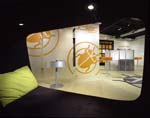 David Wakely KODE retail outlet 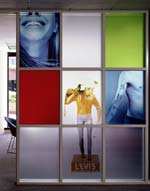 Donna Kempner Levi Strauss offices 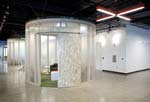 Jasper Sanidad AOL offices 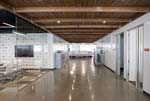 Jasper Sanidad AOL offices 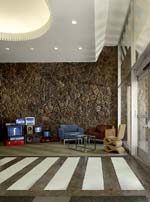 Cesar Rubio Facebook lobby 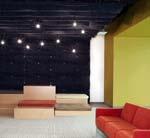 Jasper Sanidad Facebook offices  Cesar Rubio Facebook offices 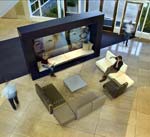 David Wakely PayPal lobby 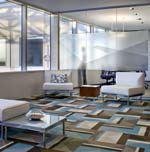 David Wakely PayPal lounge 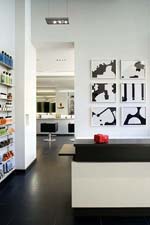 Photo: David Wakely; artwork: Verda Alexander W's Hair Salon  Jasper Sanidad Yelp! 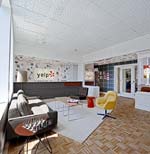 Jasper Sanidad Yelp! 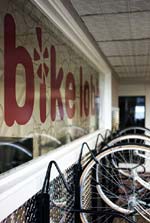 Jasper Sanidad Yelp! 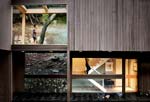 Jasper Sanidad Orpilla/Alexander residence 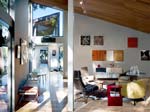 Jasper Sanidad Orpilla/Alexander residence 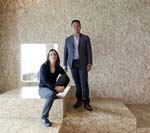 Jasper Sanidad Verda Alexander and Primo Orpilla |
© 2011 ArchNewsNow.com